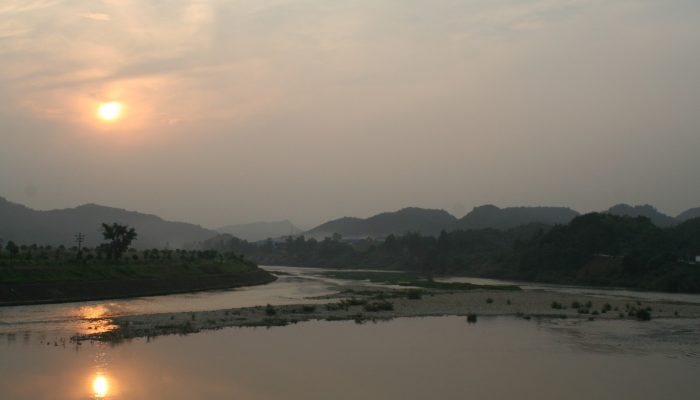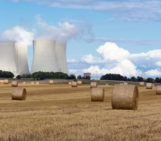
China has enjoyed economic growth over the past decades, bringing undoubted prosperity to the country. But exponential industrialisation and rapid growth comes at a significant environmental cost. The nation is heavily dependent on coal-fired power, making it one of the world’s largest emitters of greenhouse gases and it’s thirst for development is a drain on vital resources, including water. In today’s post, Heather explores how China’s geography accentuates an anthropogenic problem.
When travelling from the North to the South of China there are number of trends that can be observed – dialects change, the dominance of noodles is replaced with a preference for rice and, crucially, the climate becomes more humid. The South typically receives excessive rainfall, often leading to devastating flooding, whilst the North dries due to the thirst of industry and a booming population. China’s water diversion project aims to solve both problems with one monumental feat of engineering – by diverting 44.8 billion cubic metres of water annually from South to North via a network of canals and tunnels. I’ll explore the impact that this is having on China and its people, and whether it is a sustainable solution to the disparity in water supply across the country.
Water shortage is a constant concern in the North, with the groundwater stores that support the region dwindling to a fraction of what is required to allow the cities and industries centred here to thrive. In addition, more than half of China’s 50,000 rivers have disappeared in the last 20 years. Having experienced unprecedented economic growth over the past few decades, Beijing is on the brink of a water crisis. In the South, flooding is the primary hydrological issue, exacerbated by the drainage of lakes and the damming of rivers for construction. It was commented in the 1950s by Chairman Mao that ‘The south has plenty of water, but the north is dry. If we could borrow some, that would be good’. This statement is heralded as the idea that has grown to become what is now ‘The world’s most ambitious water-transfer program’.
The project is not merely a fantasy – construction on a number of the pathways is already complete or nearing completion, and already over 70% of Beijing’s water is transferred from the South as a result of this project. Costing $62 billion, there is a clear driving force for the project – the thirsty North is running out of water fast, and although an extreme move, it is true that this project will provide some vestige of relief – but for how long, and at what cost?
Millions have benefitted from the water transfer and it certainly is a solution to the disparity in water supply between the North and the South of the country, but it is also arguably one of the worst. China’s demand for water is growing so quickly that even before the project’s completion in 2050 further solutions are likely to be required, and industrialisation along diversion routes poses a serious pollution threat. Salinization of some waters heading North seems inevitable. An even larger concern is that the South may no longer have enough water to spare – the Han river, an important tributary to the Yangtze, is planned to have 40% of its water diverted to the North, but the towns and cities situated along its course are already experiencing water shortages. Furthermore, 345,000 villagers have been displaced from their homes to make way for the new water courses, often to lands and property far inferior to what they were promised and what they left behind. It is clear that the project is far from sustainable.
It would be wrong, however, to say that the Chinese government is doing nothing to reduce the impact of the scheme. Addressing environmental concerns in the Danjiangkou reservoir, a $3 billion ecological remediation package has been put together, and the water diversion project has allowed the groundwater reservoirs in Beijing to rebound by at least 0.52m. The environmental threat persists, however, and it seems unlikely that retrospective measures will be able to dissipate all of the environmental risk. By considering more sustainable solutions, the impact on the land and the people of China could have been drastically reduced. The Chinese vice minister of Housing and Urban-rural development has called the project unsustainable, acknowledging that, in the case of many cities, recycled water could replace diverted water. If efforts were focussed on water desalination technology and the collection of more rainwater, rather than the creation of multiple colossal aqueducts with unsavoury environmental consequences, then water resource management could be tackled in a far more sustainable manner.
Effective water conservation is something that is becoming a larger and larger problem for the Global South, particularly in the drier parts of the world. The water diversion project acts as an interesting case study, and shows the repercussions of dramatic engineering solutions to water resource problems. Although possible from an engineering perspective, forcing a change in the hydrological system of a country is rarely without its complications (and substantial expense). Lessons can be learned from the water diversion project, and future Global South nations should think twice before entering into any project of such scale without considering the full implications or other, more sustainable options. Doing this would help towards the achievement of UN Sustainable Development Goals 11 (sustainable cities and communities) and 6 (clean water and sanitation).


